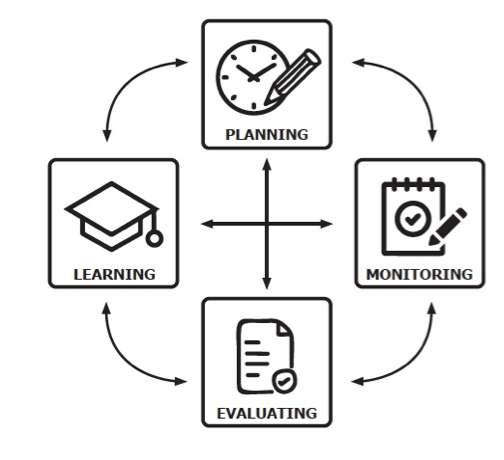
4 minute read
From the desk of our Programme Manager
Something that impacted me in this turbulent year is having the power to view things with a real, but positive lens. I control the lens through which I view the world, my work, my relationships, my successes and failures. During level 5 lockdown, I spent hours talking to family members and worked towards having better working relationships with my colleagues. I had decided to use my power and practice on having a more positive outlook instead of seeing the negatives and challenges in things.
I watched and listened to a lot of “noise” about climate change. I followed the endless debates about whether we should put structures for the next generation in place now or be optimistic and believe that human beings will be able to turn things around. I watched a great David Letterman interview, and this resonated in me: “They say the true definition of an optimist is that optimists believe that the future is uncertain. Pessimists believe they always right, but rarely receive the satisfaction of their prediction” - Robert Downey Jr. This reinforced my decision to adopt a more positive attitude. This year brought out many monsters. Lockdown forced us to face a myriad of social injustices. We, as a society had no option but to acknowledge them. BAP’s My Monster art campaign training which started in March hit home. This campaign’s intention was to empower our Community Art Facilitators (CAFs) and the children they serve with the courage to look at their monsters (internal or external) in a non-verbal way. They were guided to find solutions as to how to face them. Many thought that the purpose was to eradicate their monster, however, after reading some of their My Monster drawings and stories, I realised that the children produced more diverse and amazing solutions than we could ever have imagined. So many were positive.
Advertisement
We at BAP believe that when children share and express about their monster, that monster immediately has less power. It is sad to experience that many childrens’ monsters were connected to a specific childhood trauma. It is important that children are given the opportunity to express their traumas and hurts so that these do not spill over into their future relationships with others. They must express their monsters so that the associated trauma does not concretise in their systems; whether that is their physical body or their emotional stability.
As the stories of this campaign flooded in, I witnessed that the courage it took to address monsters, gave others the courage to do the same. I found that even my colleagues had found the bravery to share their realities. It gave me a chance to reflect on my personal monsters which lead to better working relationships in the team.
I came to realise that the saying ‘moenie krap waar dit nie jeuk nie’ (an informal Afrikaans idiom that translates to ‘do not scratch where it doesn’t itch) is an unhealthy avoidance. This very saying, often said to me by my elders growing up, I wanted to be free of. I learnt that not to scratch, gave the monster power that paralysed me.
I remember after a challenging week, I met with a close colleague and made a conscious decision to spend my energy talking about how I need to lead by example, focusing on being a positive power, rather than remaining in my circle of concern. I wanted to be in my circle of influence. I could see scratching immediately changed the dynamics in the team for the better. We started speaking more openly about our feelings and how we can be more efficient as a team knowing how to relate to each other and our emotional triggers. We learnt in coaching sessions that facts and feelings aren’t the
same thing but can be understood as people’s truths or paradigms. We learnt that supporting each other is to seek to understand each other first, before trying to be understood. It helped minimise conflict and encouraged ‘carefrontation’. This had a ripple effect in how we reach out to our Community Art Facilitators (CAFs). We challenged them to find alternative ways of completing their implementation with children in crisis and do more because their BAP skills were desperately needed. We saw some CAFs ‘come out of the shadows’ after some years of absence, asking us to re-join the network and build their skills with us. We saw teachers (many of whom were often far too overwhelmed to attend our trainings and not particularly attentive to the power of art), come forward asking for more webinars to help them enhance their teaching. We saw CAFs get involved in soup kitchens, sending art kits through alternative channels and ensure art activity sheets (developed by a qualified art therapist) were sent to their children through security and police services. We also saw an online community grow within the CAF network, where participants supported each other in the artist hubs when they shared their traumas and came out as people who were more stable and willing to trust again. We have seen how change has brought a sense of community amongst those who were already familiar with one another, and strangers. All the above allows us to be more optimistic, and adopting a belief system that we can change the world with, means that we will be. I wish you all well for the future and keep choosing to make the world a better place. Yours in finding creative resolutions to the monsters we face,
Yours in creativity and art, Zaid Philander
Programme Manager
I like coming to BAP because I want to be the best in art. I wish that I can be an artist one day. I love the teacher that teach me to do art. - Simanye Penxe, Age: 12











